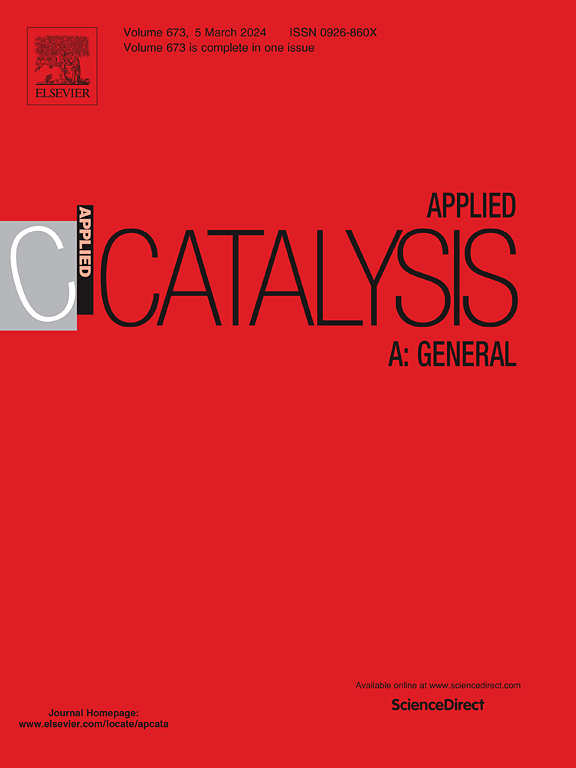Catalyst and process for the synthesis of piperidine via reductive amination from biomass derivative δ-valerolactone
IF 4.7
2区 化学
Q2 CHEMISTRY, PHYSICAL
引用次数: 0
Abstract
Piperidine (PIP) is an important nitrogen-containing heterocyclic compound used extensively in pharmaceuticals, agrochemicals, and rubber additives. Conventional synthesis routes often require energy-intensive conditions or noble metal catalysts, posing environmental and economic challenges. This work presents a sustainable chemical process for PIP production, starting from biomass-derived δ-valerolactone. The key reductive amination step employs a bimetallic Ni-Co core-shell catalyst (L7.5-meso-Ni7Co3@Al₂O₃-0.2), prepared via a continuous-flow method. Under optimized conditions, a 100 % conversion of 4-cyanobutanal (4-CB) was achieved with 63.8 % selectivity for PIP. Catalyst synergy between Ni and Co enhanced activity while reducing reliance on noble metals. This study demonstrates a scalable strategy for sustainable PIP production, aligning with green chemistry principles by employing renewable feedstocks, minimizing waste, and achieving high efficiency under mild conditions.
生物质衍生物δ-戊内酯还原性胺化法合成胡椒碱的催化剂及工艺研究
哌啶(PIP)是一种重要的含氮杂环化合物,广泛应用于医药、农用化学品和橡胶助剂中。传统的合成路线通常需要能源密集型条件或贵金属催化剂,这对环境和经济构成了挑战。这项工作提出了一个可持续的化学过程PIP生产,从生物质衍生的δ-戊内酯开始。关键的还原胺化步骤采用双金属Ni-Co核壳催化剂(L7.5-meso-Ni7Co3@Al₂O₃-0.2),通过连续流法制备。在优化条件下,4-氰基丁醛(4-CB)的转化率为100% %,PIP的选择性为63.8 %。镍和钴之间的催化剂协同作用增强了活性,同时减少了对贵金属的依赖。本研究展示了可持续PIP生产的可扩展策略,通过使用可再生原料,最大限度地减少浪费,并在温和条件下实现高效率,与绿色化学原则保持一致。
本文章由计算机程序翻译,如有差异,请以英文原文为准。
求助全文
约1分钟内获得全文
求助全文
来源期刊

Applied Catalysis A: General
化学-环境科学
CiteScore
9.00
自引率
5.50%
发文量
415
审稿时长
24 days
期刊介绍:
Applied Catalysis A: General publishes original papers on all aspects of catalysis of basic and practical interest to chemical scientists in both industrial and academic fields, with an emphasis onnew understanding of catalysts and catalytic reactions, new catalytic materials, new techniques, and new processes, especially those that have potential practical implications.
Papers that report results of a thorough study or optimization of systems or processes that are well understood, widely studied, or minor variations of known ones are discouraged. Authors should include statements in a separate section "Justification for Publication" of how the manuscript fits the scope of the journal in the cover letter to the editors. Submissions without such justification will be rejected without review.
 求助内容:
求助内容: 应助结果提醒方式:
应助结果提醒方式:


